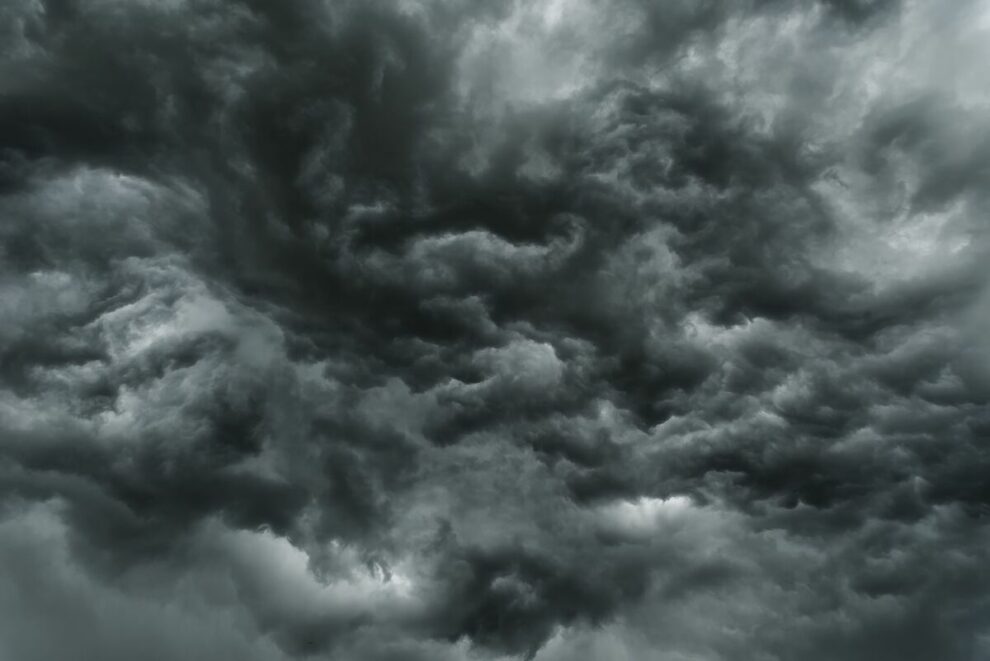NBC hyperventilates that “Danny became the fourth named storm of this year’s Atlantic hurricane season, marking the fourth time on record that so many powerful storms have formed before July, experts said.” Aaaah. The fourth time. It’s over. Not that they’re hurricanes, you understand. Danny was a minor-leaguer, a “Tropical Storm”, which means winds of at least 63 km/h, before being sent down to the absolute boonies as a “tropical depression” that caused rain. And when were the other three? The story didn’t say. But it did throw in “Last year saw 30 named tropical cyclones form in the Atlantic Ocean, a record in the nearly four decades that scientists have been tracking the storms via satellites…. Although researchers believe climate change is driving the intensity of these storms, debate remains over why the number of storms has risen steadily since 1972.” So verdict first, trial afterwards. Including on the awkward point that if the number has risen steadily since 1972, you either think climate change has been causing extreme weather for 50 years or you’re just throwing in a bunch of scary-sounding items and hoping to cause panic.
From the “I need a campfire story quick” department we also got “UH Report Finds Hawaii Needs To Prepare For More Frequent High-Tide Flooding”. In this case for some reason we have 15 years not 10. And a colourfully terrifying chart of a sudden leap in flood days from basically none at all to 250 a year. Because, you see, “Until 100 years ago, the global sea level had been consistent for more than 3,000 years. Since people started burning significant amounts of fossil fuels, the sea level has risen about 7 inches. Half of that rise has occurred since 1993, according to data from NASA.”
Yes, that’s right. There was no sea level rise for three thousand years. Experts say. And of course we know exactly how much flooding there was in Hawaii in the 17th century, the 14th or 49 BC because um um uh we don’t.
We hear a fair amount of talk that might make you think we do. For instance of so-called “100-year” or “500-year” events that you might imagine were labeled because someone counted and you get roughly one every century fairly even spaced. But it’s not so. Instead, as Judith Curry recently observed with respect to a planned power plant on the Gulf Coast, “A quick look at the historical hurricane record shows an estimated storm surge of 12 feet near that location in the 1920s, and an estimated 15 ft storm surge from a hurricane in the 1840’s – periods with significantly cooler climates than now.”
There are also claims that climate change might doom Wimbledon, as English temperatures rise toward those of other places where tennis is played. So there go the strawberries or something. A better try is the Toronto Star’s “It’s so hot that Canada’s sea creatures are cooking to death in their shells”. But if all that one does is recall the punchline from an old B.C. cartoon, “Steamed clams for everyone,” and you’re not scared yet, perhaps you’d like to lose some weight.
So sure enough “Warming may cause humans to shrink”. Though not alas the way a sauna temporarily causes. Instead, “Scientists… found a clear link that people living in colder environments were larger, while people in warmer regions were smaller. This trend continues today, the scientists add, with people in colder parts of the planet tending to be bigger than those in warmer places. For example, the average Dutchman is 6 feet tall, whereas the average Indian man is 5 feet 5 inches in stature.”
Some might think there’s more to eat in Holland than in much of India. But however that may be, “the researchers from the universities of Cambridge and Tubingen, in Germany, write that for every degree of warming, there is a 0.87 per cent decrease in body mass.” So if we miss our Net Zero targets and the place warms by 2°C you could lose an entire kilo if you currently weigh 60 of them. Which might not seem worth it. But here’s the bad news: “for every degree of cooling, body size increases by 0.87 per cent.” Which just might make stopping the warming then sucking CO2 out of the air and cooling the place down again unpopular.



What if every scare story was brought to the attention of a publisher who put it on his/her website for rational, informed readers to dissect, so that readers who need help with critical thinking skills could see how misinformation has been used to frighten people?
If this concept could be promoted, we might see sites like this covering all sorts of topics where fear based thinking is being used and promoted.
There are far too many people who lack critical thinking skills and are easy prey.
I always thought that body shape was to a large extent an adaption to control heat loss. Tall and thin, as you often will find in Africa, gives a relatively high surface area to volume ratio, which improves heat loss, whereas Inuit tend to the short and squat body shape which gives a relatively low surface area to volume ratio, thus helping to conserve heat.
more tropical storms /hurricanes are being spotted by satellites but the accumulated cyclone energy is not rising . many of the storms are both marginally strong and may last only a few hours .
Jeff gold: I have been promoting the conjecture, since Katrina in 2006, that global warming should reduce the power and number of hurricanes. (1) Hurricanes are the result of a clash between warm and cold air fronts. (2) Global warming predicts that the poles warm faster than the equator. Therefore, (3) global warming causes the temperature gradient of the planet to level off, which results in fewer hurricanes with less intensity. Richard Lindzen (MIT) apparently agrees with me.
I’ve yet to meet a skinny South Sea Islander!